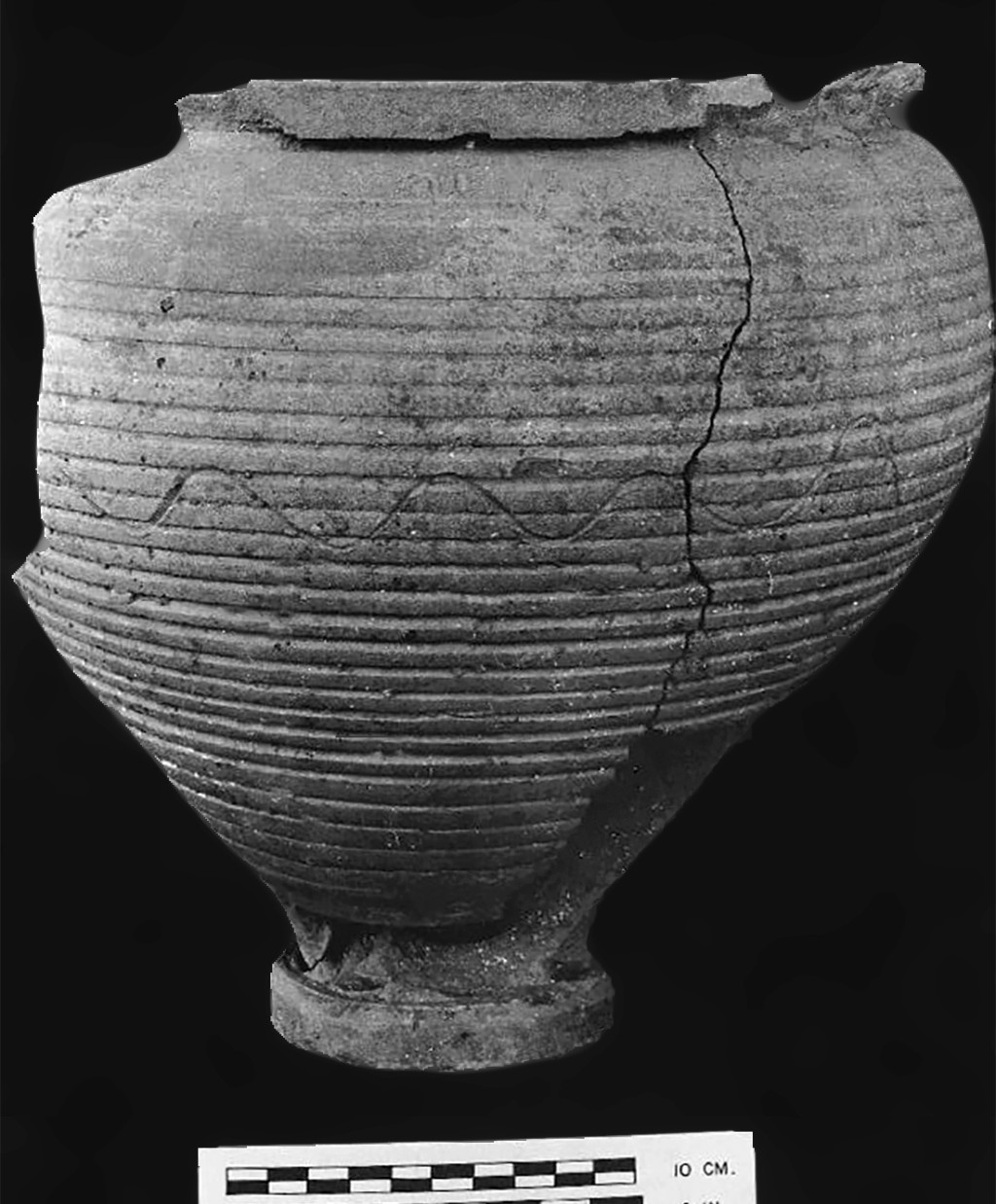Sasanian
The Sasanian period (225 - 650 CE) was another of the most densely populated points of occupation in Sistan. There is a great deal of continuity of the material culture with the preceding Parthian period. Most of the ceramic forms are similar, most are hard fired red wares and the decorative elements—ribbed wares, ring burnishing, stamping, applique, combed and incised bands—continue in this period.
The differences between the two periods are, therefore, subtle and will require careful examination of wares and shapes, which is still in process at this time. While the core of Parthian pots were usually brick red with slips dark red or darker, Sasanian pots ranged more often from red to a lighter orange and the slips from orange to buff. The barrage of red slip ring burnishing that is found at Parthian sites sharply decreases, though doesn’t completely disappear, in the Sasanian period. Some of the more visible Parthian ceramic forms—like goblets and situla—aren’t found at Sasanian sites. Instead, there is an increase in incised decorations and in undecorated utilitarian wares.
Being defined by absence of particular wares common in the previous period, rather than by presence of distinctive new forms, creates difficulty for us in defining the Sasanian period by its ceramic wares. A few subtle elements stand out. Rather than the ledge rim embedded jars characteristic of Parthian jars sites, in Sasanian times these jar rims tend to be elevated and often decorated. Several sherds were found with impressed decorations that convey more complex themes than the simple impressed decoration of Parthian wares. A new form of jar in Sasanian times is ribbed with an outfolded rim and a thick disk base with deep jab marks along the join with the body.






